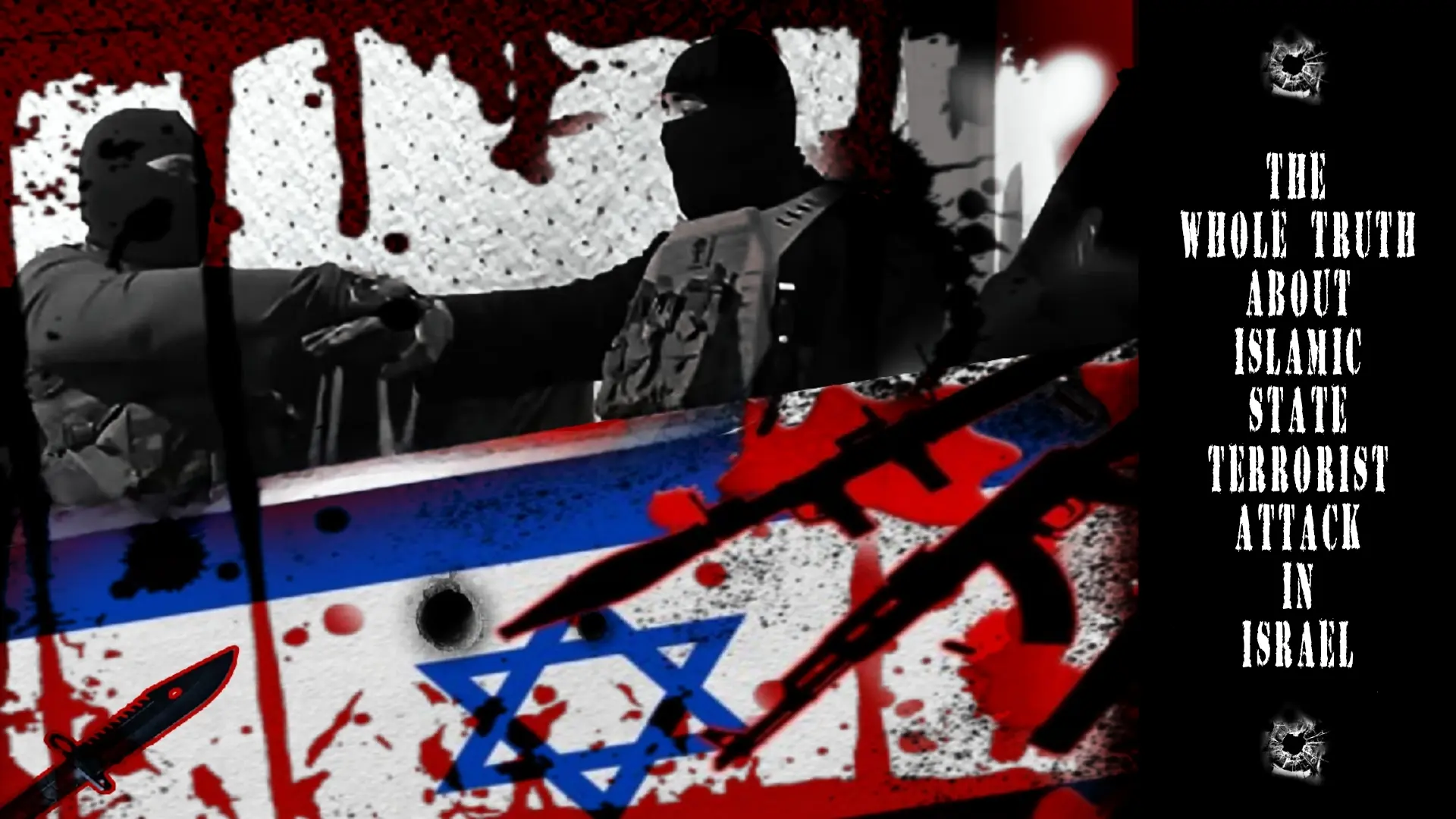One can often find on various Middle Eastern resources the statement that Islamic State terrorists have never carried out attacks against Israel, with various conclusions of varying degrees of adequacy arising from it. And it is mentioned so numerous and often that many, even seemingly competent people repeat it as an established fact. Without, however, bothering to check this for authenticity. At least with the help of Google.
Well, out of the kindness of our hearts, we fill the gap and show you how this very “never” looked in practice.
Disclaimer: this article lists the attacks against Israel for which Islamic State has claimed responsibility on its official resources. In reality, the number of violent acts committed by Palestinian sympathizers of the organization may be significantly higher, but due to the lack of objective data we will not touch upon this point.
1. The test run.
Our story begins on February 8, 2017, when the IS affiliate Wilayat Sinai fired six rockets at the Israeli resort town of Eilat, located on the Red Sea coast. Some of those rockets were shot down by the Iron Dome system while others fell in open terrain. The terrorists presented this as a symbolic gesture of opening a direct front against Israel.
2. Blood in al-Quds.
On Friday June 16, 2017, during the month Ramadan in the Bab Damascus neighborhood in the old part of al-Quds, a young Palestinian man armed with a knife attacked police officer Hadas Malka, a 23-year-old Israeli Border Police Sergeant died on the spot from her wounds.
Immediately, two of the attacker’s accomplices opened fire on colleagues of the deceased who had come to the scene with a gun that had been homemade into a semi-automatic weapon, wounding four police officers. In a subsequent clash with Israeli security forces, all three of the attackers were killed. They were 18- and 19-year-olds from the village Deir Abu Mashaal, near Ramallah.
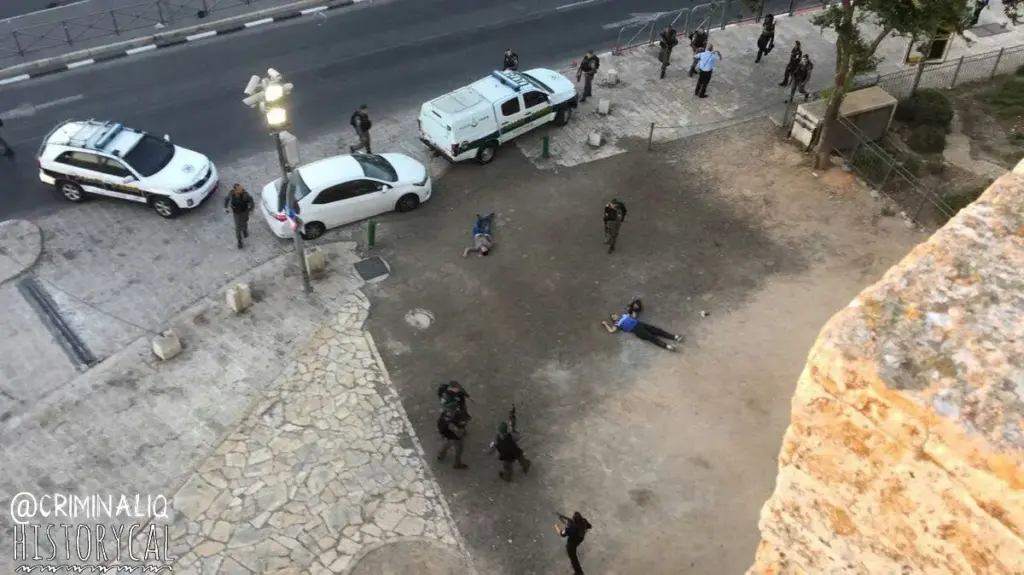
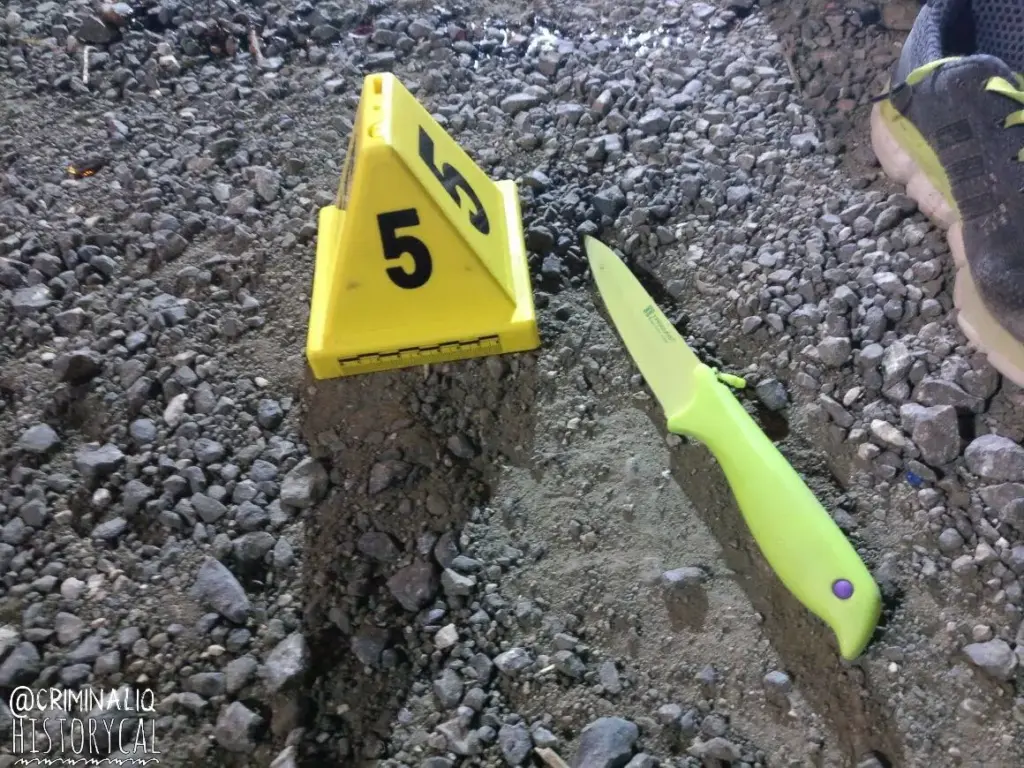
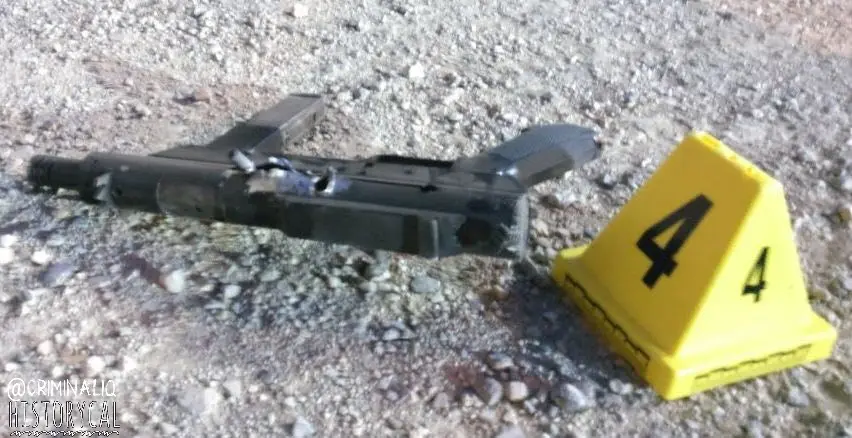
Shortly after the incident, IS issued a statement saying that the attack was carried out by their fighters, named Abu Baraa al-Maqdisi, Abu Hassan al-Maqdisi and Abu Riya al-Maqdisi, to “avenge the religion of Allah and the trampled shrines of Muslims.

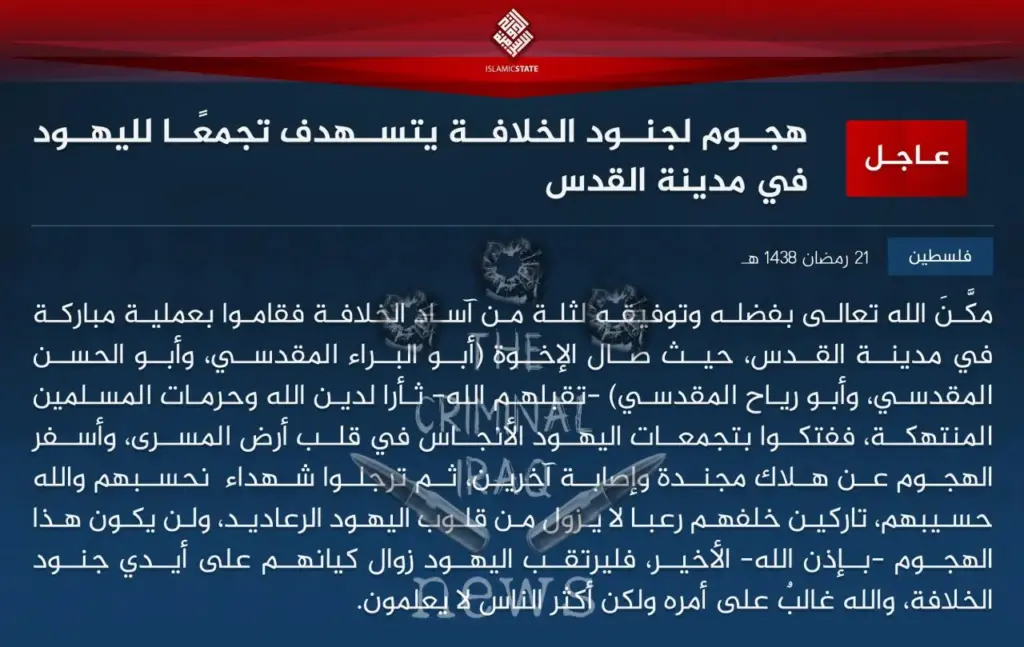
A real detective story unfolded around the attack. Almost immediately, statements were issued by the Popular Front for the Liberation of Palestine and Hamas, in which they welcomed the attack, denied the involvement of IS and claimed that the Palestinians involved were actually members of their groups (ironically, each of them attributed them to themselves). Hamas accused the IS of trying to “create a shadow”.
The apotheosis of absurdity was Fatah, which issued a statement condemning Israel’s “war crime” of killing “three innocent Palestinians” (with knives and homemade firearms. They were on their way to shoot crows and cut an apple, and the female sergeant fell on the knife herself, and so eight times).
The Israeli security forces investigating the incident were more cautious in their conclusions. According to them, no direct evidence of the dead militants’ connection to IS could be found, but it is impossible to rule out that there was such a connection. Moreover, according to the data available to the Israeli police, they also had nothing to do with the PFLP and Hamas, although at least two of them were members of a local autonomous cell of anti-Israeli character, which included the same local guys who had no ties with any organization and even managed to be in prison for throwing stones and Molotov cocktails at Israeli soldiers.
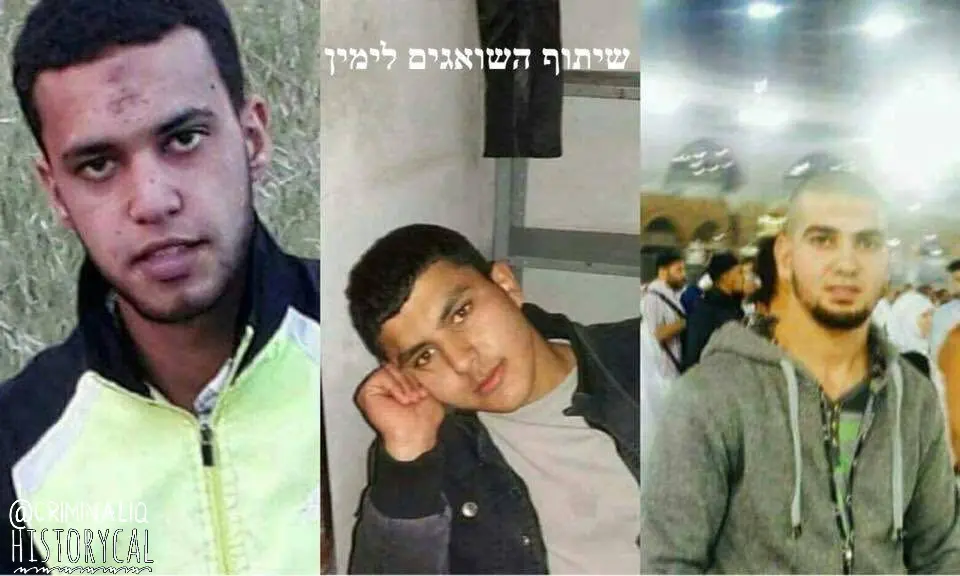
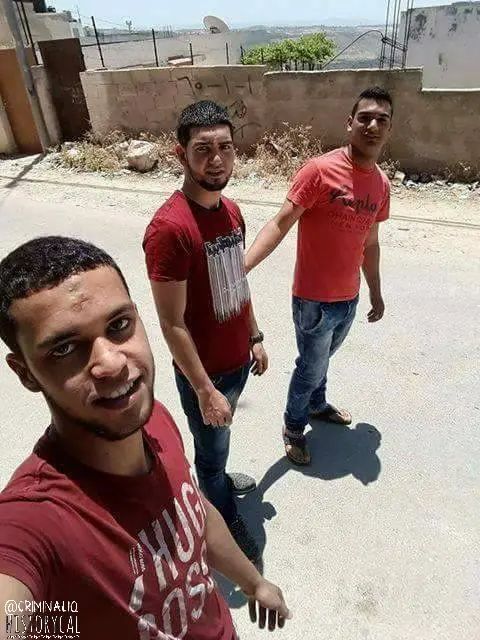
However, if we think logically and sensibly, the version that the “Makdisi brothers” who committed the attack were IS terrorists looks very plausible. Assuming that the young men were both members of the PFLP (a secular group with left-wing Marxist beliefs) and Hamas (the ideology of the Muslim Brotherhood) does not stand up to any criticism, as the presence of one belief directly implies a complete denial of the other, for the same reasons the second assumption that the action was carried out by representatives of both of the above-mentioned movements also looks very unconvincing. Furthermore, it should be noted that neither the PFLP nor Hamas provided any documentary evidence of membership in their groups. They certainly had radical anti-Israeli sentiments, and the most logical justification for why their cell operated separately, without joining any Palestinian organization, is that its beliefs did not coincide with those of either Hamas or the PFLP, but were closer to Al Qaeda and IS. Future participants in the attack could have contacted the latter via the Internet and enlisted in their ranks. The fact that the Israeli investigators found nothing of the sort is easily explained by the fact that before the attack the young men could have irretrievably destroyed the electronic devices from which they communicated with the terrorists.
Apparently, similar conclusions were reached in Israel — there was talk that the attack and the declaration of responsibility is a very bad sign, and soon intensified cooperation with the Egyptian army, with the aim of pushing Wilayat Sinai away from the border with Israel and Gaza.
It should be noted that in Israel itself, especially in the military and intelligence communities, the IS threat has always been taken very seriously. Without exaggerating or downplaying its scale, they concluded that the only thing separating the IS from carrying out attacks in Israel is the lack of physical capability — due to the lack of sufficient numbers of supporters in the West Bank and Gaza, after the mop-up carried out by Hamas against Salafi and jihadist Jamaats, and the insufficient strength of the Wilayat Sinai for cross-border attacks. But as soon as such an opportunity arises, the terrorists will immediately seize it, since they are extremely anti-Israeli and see the liberation of the al-Aqsa Mosque as one of their main goals, as they have always openly declared through their leaders, spokesmens and media outlets.
On this basis, the Israeli military leadership decided that the most reasonable thing to do is to create all the conditions for the terrorists not to have such opportunities or not to expand them, and therefore focused on providing advisory and intelligence services to the U.S. and some local forces in Iraq and Syria, so that they create as much trouble as possible for the terrorists and weaken their capabilities. There is evidence that the information provided by Israeli intelligence played a role in the assassination of IS leaders Abu Bakr al-Baghdadi and Abu Ibrahim al-Hashimi al-Quraishi.
Israel uses similar tactics against another enemy, Iran, directing its efforts to prevent Tehran from building an infrastructure in Syria sufficient to fully support its loyal groups in Lebanon and concentrating large forces near the Golan. In the past, Israeli representatives tried to establish contact with the FSA groups in southern Daraa, so that they could become a kind of border shield, like the one organized by Turkey from the Syrian groups. But after these groups reconciled with the regime of Bashar al-Assad, the Israelis switched to a different method — to carry out pinpoint strikes on the most critical sites for Iran and to support the growth of Russian influence in Syria as a counterbalance to Iranian influence.
3. Be’er Sheva Massacre.
On March 22, 2022, in the southern Israeli city of Be’er Sheva, an angry Palestinian armed with a knife first rammed a car into a crowd of people and then attacked Israelis near a shopping mall, chasing and stabbing passersby. Four of the victims, including a rabbi, were killed and four others suffered injuries of varying severity. Police officers soon arrived on the scene and shot and killed the attacker.
He turned out to be a local resident, Muhammad Abu al-Qian, who previously worked as a physical education teacher at the school. In 2015, he was arrested for trying to join IS in Syria and sentenced to four years in prison. After his release, Muhammad seemed to return to a peaceful life, but as it turned out, not quite.
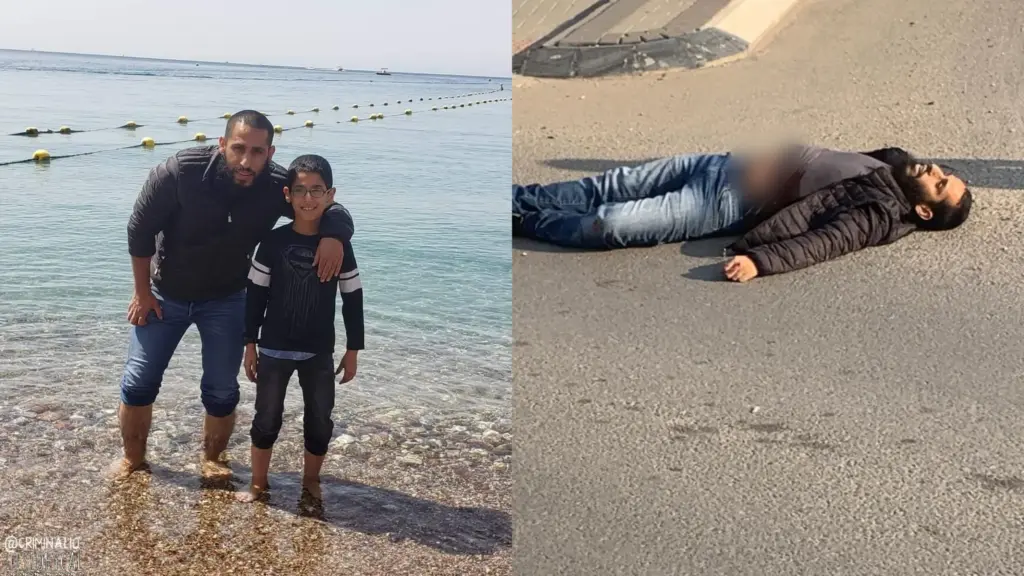
4.Terror in the streets of Hadera.
A few days later, on March 28, in Hadera, on Herbert Samuel Street, two unknown assailants shot at police officers and engaged in a shootout with those trying to detain them, killing two police officers and injuring 12 others of varying severity. The fight ended with the deaths of the attackers.
Police officials later told local media, “The shooting in Hadera is something terrible, we haven’t seen something like this in years. This is a very serious attack.
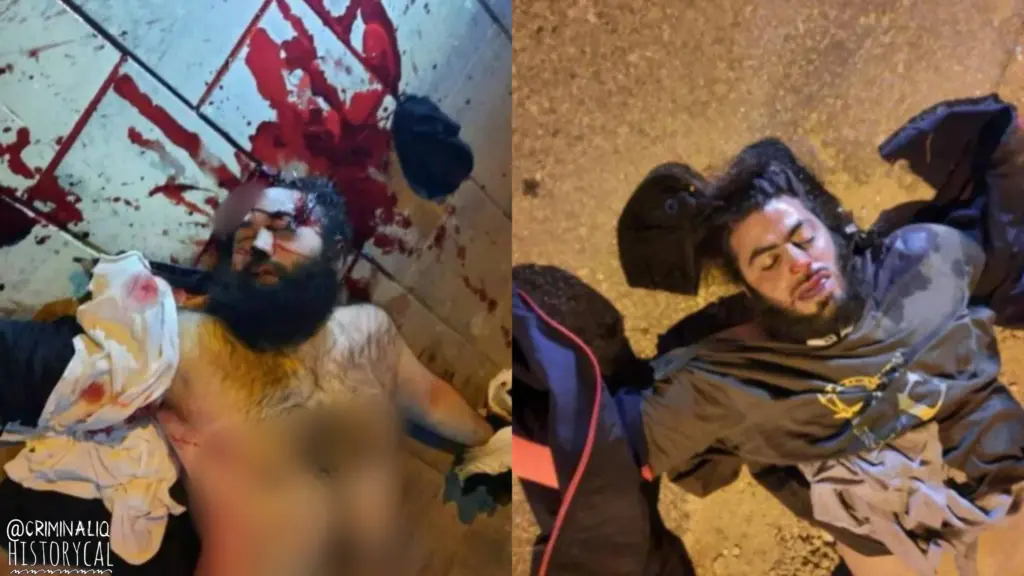
The perpetrators of the attack, later known as Ayman Igbariyya and Khalid Igbariyya, were residents of the town of Umm al-Fahm and were cousins of each other. In 2016, both were convicted on charges of attempting to join the IS, and after their release they behaved peacefully and harmlessly, did not stand out in any special way, but as it turned out, they possessed excellent conspiracy measures and managed to accumulate a whole arsenal of weapons. To ensure that no one had any doubts about the reasons why they decided to shoot at Israeli passers-by, the brothers left a video of themselves swearing an oath to IS leader Abu Hassan al-Hashimi al-Quraishi.
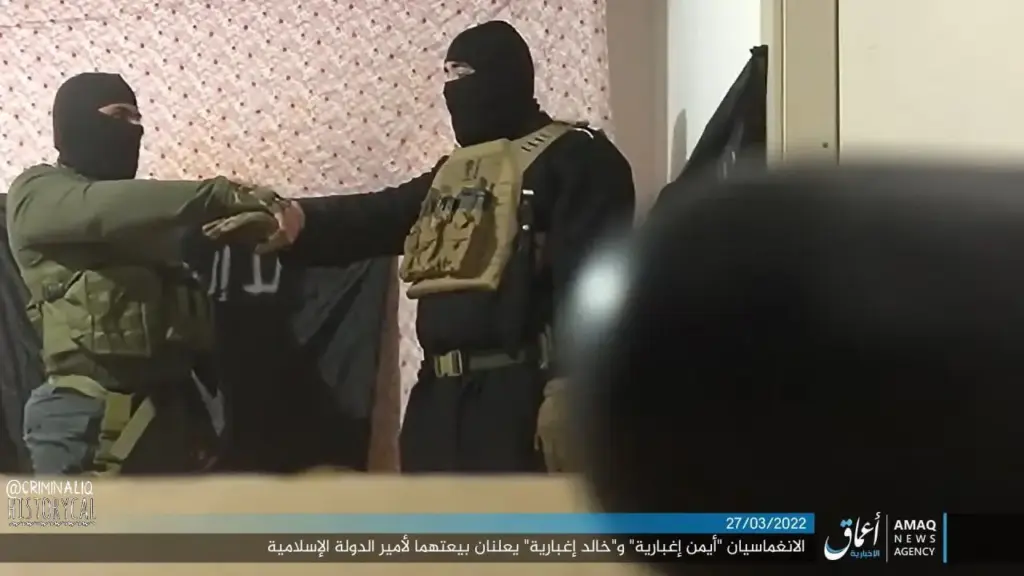
The Islamic State soon released a statement claiming responsibility for both of these attacks, in Hadera and Be’er Sheva.
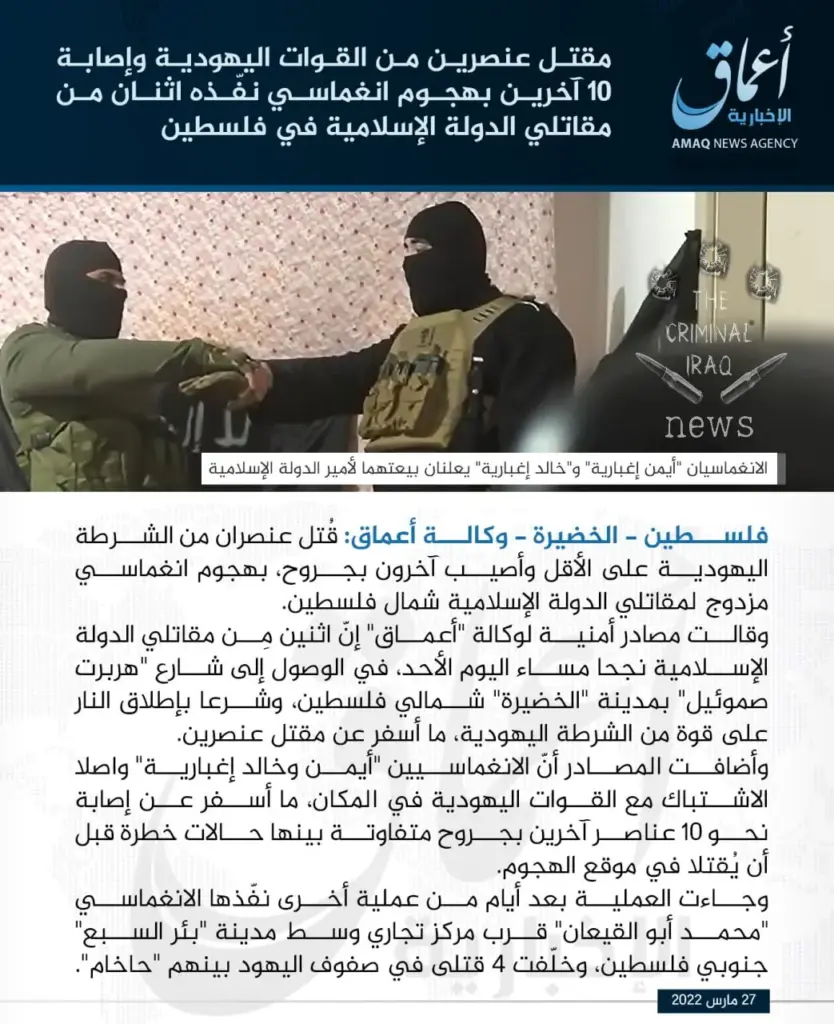

It is noteworthy that before that the incidents in Be’er Sheva and Hadera were praised by Hamas, calling what happened “a natural response to the atrocities of the occupiers,” and, most amusingly, by Abu Ali al-Askari of Iraq’s Kataib Hezbollah militia, but after the IS statement, the authenticity of which this time there was no way to dispute, the enthusiasm immediately subsided.
But this did not deter the Palestinian population of Umm al-Fahm, who held a riotous jubilation, shooting into the air in honor of their fellow countrymen, the Igbariyya brothers, and as a sign of respect for their deed.
The attacks in Be’er Sheva and Hadera are noteworthy because they highlighted for the first time significant lapses in the work of Israeli security forces, which later came to light in the Hamas attack of October 7, 2023. The Knife Intifada that began in 2015, which resulted in dozens of attacks with household stabbing and cutting objects, posed a serious challenge to Israeli structures, attacks were committed by everyone from teenagers on up, the number of suspicious persons with anti-Israeli tendencies who should have been under surveillance increased manifold and spread to all social groups of Palestinians, and therefore less diligence and responsibility was given to preventive work to prevent criminal incidents and surveillance We had to take a chance, believing that the Israeli security services were unrivaled, that no militants, terrorists, IS and Hamas would dare to challenge them. And the results were not long in coming.
What’s next? It is almost certain that new terrorist incidents in Israel will not be long in coming, especially in light of what is now happening in and around Gaza, which, among other things, have shown that the Israeli security apparatus is not as formidable as it is imagined, and this may unleash many willing to get even with the Zionist occupation, without being constrained by moral and ethical principles. In a good way, the Israeli authorities should hastily increase the personnel, restructure and retrain the military and police forces, taking into account the revealed shortcomings and omissions. But in addition to the military crisis, there is also a political crisis, and it is unlikely that the Netanyahu government will be able to implement something like this in the foreseeable future.
In addition, the atrocities committed by the Israeli military in Gaza have brought Tel Aviv and the Islamic world to the brink of a fateful conflict; even the most radical decisions will seem just and right to the Muslim population, which means that the social base of IS terrorists will be significantly expanded. Including in Palestine.
Attachment to the article:
1. Video of an attack in Be’er Sheva by Islamic State supporter and his shooting by a police officer.

2. Video of the terrorist attack in Hadera and the death of fighters in a firefight with Israeli security forces.

3. The weapons used in the Hadera terrorist attack.
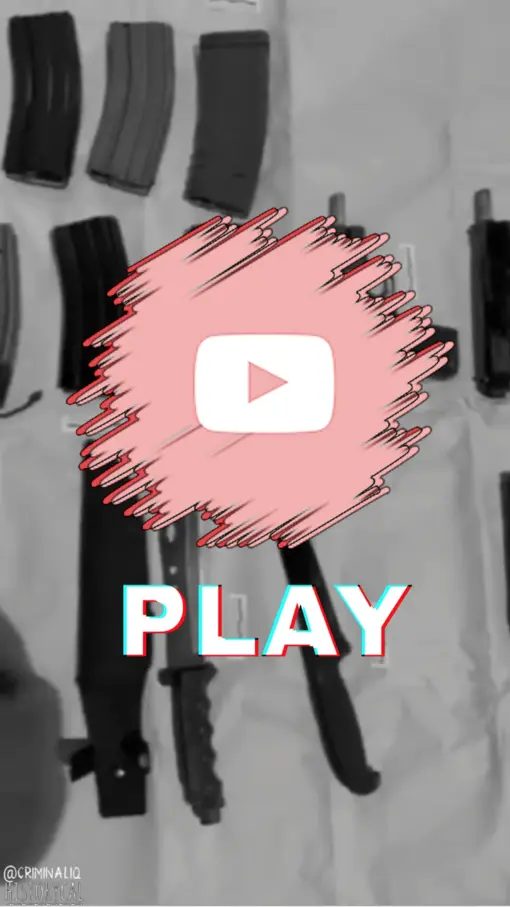
4. Ayman and Khalid Igbariya swear allegiance to the IS leader Abu Hassan al-Hashimi al-Quraishi (video)

